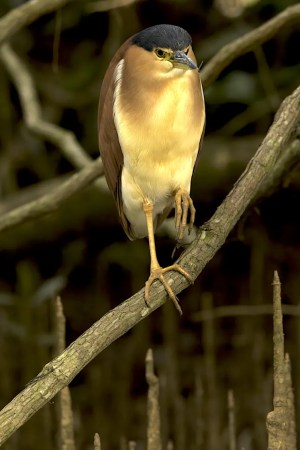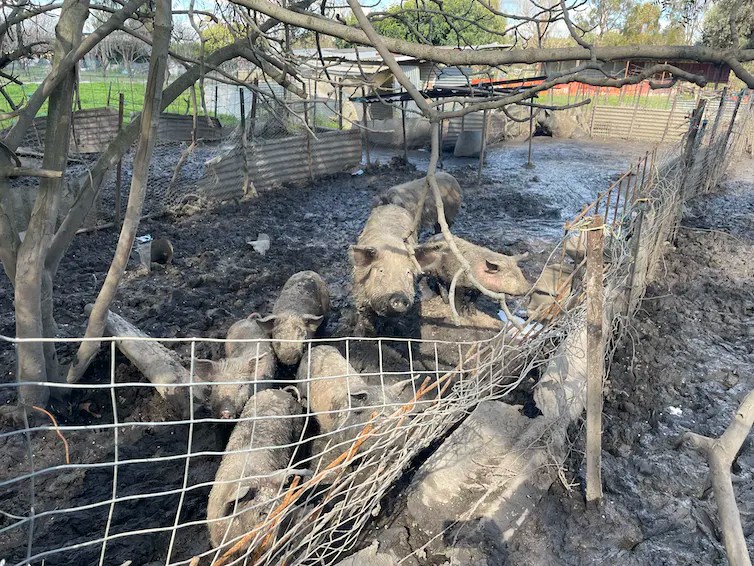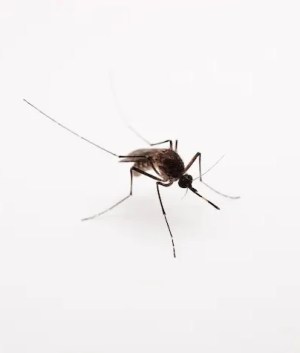Will Japanese encephalitis return this summer? What about other diseases mosquitoes spread?

The past two summers have been swarming with mosquitoes, thanks to near-constant rain and flooding brought on by La Nina.
With the return of El Nino, and a hot, dry summer in store, what’s the outlook for Japanese encephalitis and other mosquito-borne diseases?
First, let’s look back at the past two summers
The boom in mosquitoes over the past two springs and summers didn’t just bring an increased annoyance of buzzing and bites but also outbreaks of potentially fatal mosquito-borne disease.
The first outbreak of Japanese encephalitis virus was first detected in southern regions of mainland Australia in February 2022.

Mosquitoes are infected after feeding on birds. Photo: James Cook University
This was followed by the return of Murray Valley encephalitis in early 2023, which turned out to be the biggest outbreak in the southern states since 1974.
These outbreaks were the result of more than just more mosquitoes.
Flood waters provided ideal breeding conditions for waterbirds, the key “reservoirs” of these viruses.
Mosquitoes pick up the infection after feeding on the birds and then subsequently spread the viruses to people when they bite.
What’s different about Japanese encephalitis?
Outbreaks of Japanese encephalitis virus in temperate regions of Australia in 2022 came as a surprise.
There had been activity in northern Australia and the Torres Strait, but it was generally only considered a risk to overseas travellers.
In India, south-east Asia and the western Pacific, Japanese encephalitis is considered one of the most dangerous mosquito-borne diseases, with tens of thousands of cases of severe infection each year.
The majority of people infected suffer no or very mild symptoms, but some will experience neck stiffness, fever, headache and, in the most severe cases, permanent neurological complications or death.
However, a vaccine is available that can significantly limit serious illness.
The discovery of Japanese encephalitis virus in Australia’s southern states triggered a declaration of a “communicable disease incident of national significance”. This was in place from March 2022 through June 2023. A total of 45 people were infected, seven of whom sadly died.
It wasn’t just people who were at risk. The impact on commercial piggeries, which farm pigs for pork production, was devastating and required urgent strategies to control mosquitoes.
Piggeries weren’t the source of the outbreak, they were the “canaries in the coal mine” – signalling the spread of the virus early on and the need to protect the broader community.
What caused outbreaks in piggeries?
Our research investigated how different landscapes and weather patterns influence interactions between wildlife, mosquitoes and outbreaks of Japanese encephalitis virus.
We looked at 62 piggeries where the virus had been detected and some locations where the virus had also been detected in mosquitoes, along with waterbird and feral pig habitats, rainfall and temperature.
Some of the results were unexpected.
Piggeries were at highest risk of an outbreak when the number of different waterbird species in their location was “just right”. If there were too few or too many, the risk of an outbreak was reduced.

Feral and domestic pigs can be infected with Japanese encephalitis virus and also infect mosquitoes that feed on them. Photo: Cameron Webb
High rainfall and flooding provided excellent conditions for mosquitoes, with temporary wetlands and flooded areas posing a greater risk than permanent wetlands.
Temporary wetlands may have provided habitat for waterbirds whose normal habitat and movement patterns were disrupted due to the extensive La Niña flooding.
Or perhaps permanent wetlands support a greater diversity of aquatic life (including animals that eat mosquitoes) that helped keep mosquito numbers lower than temporary waterbodies.
So what might happen this summer?
The return of El Niño is expected to bring below-average rainfall and above-average temperatures. But that can be unpredictable. Wetlands are already drying up. Bushfires have replaced floods.
Mosquito populations are expected to decline sharply. Surveillance programs of state and territory health authorities, such as New South Wales and Victoria, are already reporting mosquito populations far lower than previous seasons.
So we may not see as much Japanese encephalitis this season. But that doesn’t mean it will disappear completely.
It doesn’t matter how hot and dry it gets, mosquitoes are resilient and will persist. They’ll seek out the same environments where water remains. So too will waterbirds and feral pigs.

The Culex annulirostris can spread Japanese encephalitis and Murray Valley encephalitis viruses in Australia. Photo: Cameron Webb
Authorities are also on alert for the return of Ross River virus along the coast. Despite the lower rainfall, the mosquitoes that live in saltwater wetlands will thrive following flooding by high tides, especially “king tides”.
Combined with extreme weather, even during hot and dry summers, outbreaks of Ross River virus can occur.
Reduce your chance of getting these viruses
To protect yourself and family from mosquito bites and mosquito-borne disease:
- Keep following the advice of health authorities
- Try to avoid bushland and wetland areas in late afternoon and early evening
- Cover up with long-sleeved shirts, long pants and covered shoes
- Apply a recommended insect repellent
- Check your eligibility for a Japanese encephalitis vaccination.

Cameron Webb, Clinical Associate Professor and Principal Hospital Scientist, University of Sydney; Michael Walsh, senior lecturer of Infectious Disease Epidemiology, University of Sydney, and Victoria Brookes, lecturer in Epidemiology and One Health, University of Sydney
This article is republished from The Conversation under a Creative Commons licence. Read the original article.








